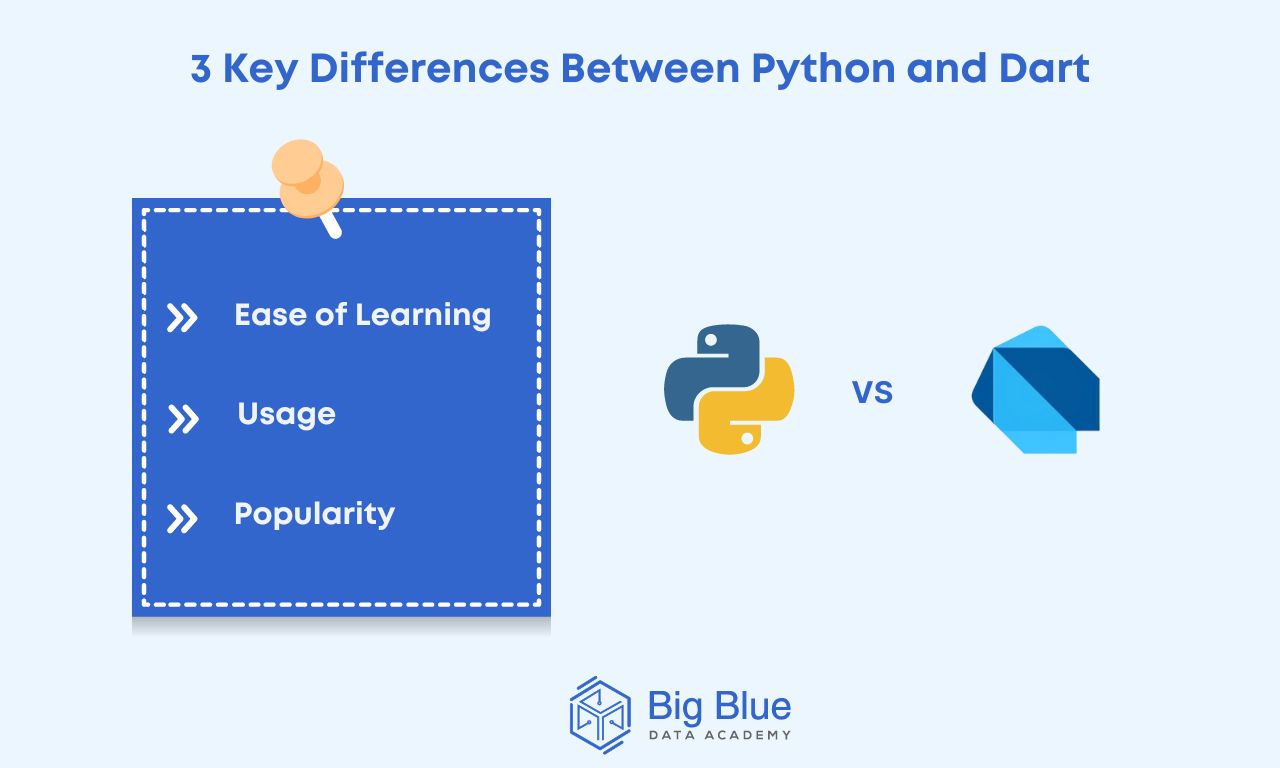Python vs Dart: What Are the Differences? (2024)
Are you in the process of searching for the ideal programming language, and the numerous options have already posed a challenge for you?
Many programmers often face this challenge when choosing the right programming language in their early professional steps in the job market.
Two popular choices are Python and Dart.
Python takes the lead in the programming sector, while Dart is a relatively newer language in the field.
So, in today's article, we will explore:
- What Python is
- What Dart is
- Their differences
- Which one is better
Let's start with two basic definitions.
What is Python?
Python is a general-purpose, high-level programming language that supports both procedural and object-oriented programming.
It was initially designed by Guido van Rossum in 1991 and developed by the Python Software Foundation. Python features a garbage collector, automatically freeing up memory that is no longer needed.
It is particularly popular for building applications and models in Machine Learning and AI.
Many applications we use daily, such as Uber, Instagram, and Spotify, are built with Python.
Now, let's move on to some basics about Dart.
What is Dart?
Dart is a general-purpose, object-oriented programming language with dynamic types. It was designed by Lars Bak and Kasper Lund and developed by Google in 2011.
Dart focuses on productivity and performance, with syntax similarities to languages like C.
It has a rich set of features, including inherent support for frameworks like Flutter for building cross-platform apps. Dart supports asynchronous programming and has good support for concurrent and parallel programming.
Like Python, Dart also utilizes a garbage collector for automatic memory management.
Having covered some basics about these two languages, let's delve into a more detailed comparison.
Python vs. Dart: Key Differences
Python and Dart are cross-platform languages, which means that one can run code written in these languages on different operating systems without major modifications.

However, Python and Dart, while sharing some similarities, are quite different.
Let's see in more detail how they differ.
Difference #1: Ease of Learning
Python has a simple and easy-to-read syntax, emphasizing code readability.
It is a highly accessible programming language for beginners.
Dart, while not among the most challenging programming languages, has syntax similarities with languages like C# and Java.
Therefore, compared to Python, Dart is less beginner-friendly.
Difference #2: Usage
Python is a general-purpose language primarily used in the backend.
It finds applications in various domains, including web app development, data science, artificial intelligence, and machine learning.
It is also frequently used for scripts in various environments, such as DevOps.
On the other hand, Google developed Dart with the main purpose of creating a frontend UI for web and mobile apps.
It is often used in conjunction with Flutter for building visually appealing, user-friendly interfaces.
Difference #3: Popularity
Both Python and Dart are open-source languages with communities contributing to their development through providing sources and feedback.
Although Dart has had a growing community in recent years, mainly due to its integration with Flutter for mobile and web development, it doesn't have the traction that Python has.
This is partly because Dart has more limited use and is a newer language compared to Python.
In addition, Python has a correspondingly extensive ecosystem of libraries and frameworks such as NumPy, Pandas, TensorFlow and scikit-learn.
According to the TIOBE Programming Community Index, a programming language popularity index, Python consistently holds the 1st position, while Dart is ranked 32nd in popularity.
Ramping Up
We've discussed Python and Dart, analyzing their differences.
From a comprehensive perspective, there's no right or wrong choice in the Python vs. Dart dilemma; it all depends on individual needs.
However, objectively, Python offers more capabilities and might be a better choice for both a novice and an experienced developer or data scientist.
So, if you are excited and want to read more about Python and Data Science, follow us for more educational articles!

.jpg)
.jpg)